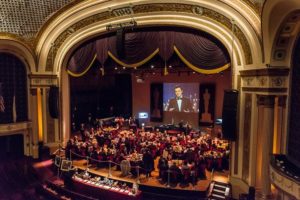Fire fuses with water in a stunning display that sparked a renaissance in Providence more than two decades ago. On a full lighting night, some 80 blazing braziers stretch on the city’s rivers. The wood fires reflect on performers and musicians lining the streets of this unique Rhode Island capital. The dichotomous art display is called WaterFire. It was first lit in 1994 as the city was rejuvenating its downtown.
Today, its signature is on the thriving arts scene that exists here amid top-ranked colleges, much-lauded restaurants and cobblestone walkways. On College Hill, restored colonials line Benefit Street in a “Mile of History” near Brown University. Founder John Brown’s home is a museum where exhibits include the sobering slave-trade artifacts that helped build Brown’s wealth. The Brown University Bookstore on Thayer Street will fan your intellectual flames for hours.
Nearby, The Independent Man, a 500-pound bronze sculpture, crowns the marble dome of the Rhode Island State House. Providence became a refuge for independent thinkers after its founding by Roger Williams, a renegade preacher who fled persecution in Massachusetts. It went on to become an active seaport until it was wracked by hurricanes in the first half of the 20th century. Providence restaurants receive many accolades. World-renowned culinary institute at Johnson & Wales University can take some of the credit. Alums and students alike assimilate into area restaurants. The range of eateries downtown and on College Hill varies from haute cuisine on white tablecloths to burgers among the lively college crowd.
Not to be missed, though, is the epicurean strength that comes from ethnic cuisine. Among the best is found on Federal Hill in Little Italy. Stroll around the old-school neighborhood with its grand architecture, and then enjoy authentic Italian cooking. For Portuguese dishes that hail from the old country, head to the east side of the city. No matter your choice, the fare in Providence is sure to keep your fires burning.


